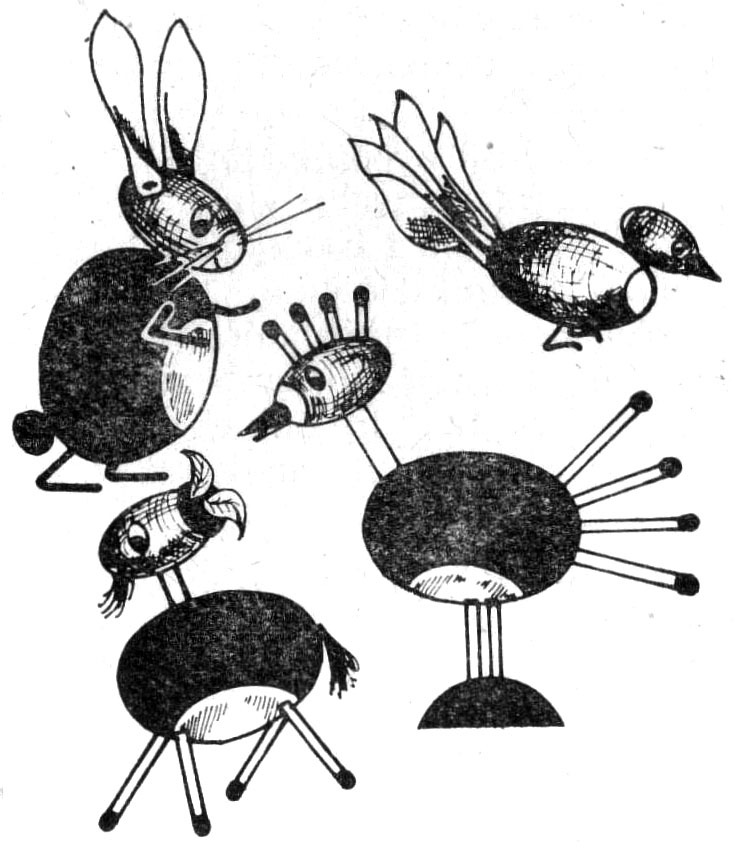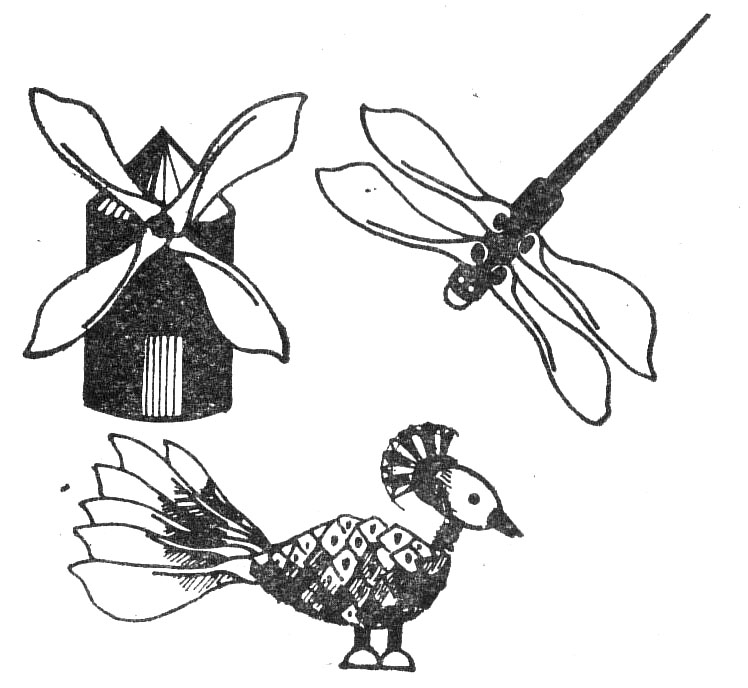Chestnut men.
Garden, pole, forest provide a lot of interesting material for DIY. As soon as we find some time, we will show the child how different ways they can be used.

For example, from the very tiny green buds of chestnut fruits that fall profusely after a rain or storm at the very beginning of summer, you can make, connecting them with sticks, doll furniture, human or animal figures. Later in the fall, from already ripe chestnuts, glans, of pine and spruce cones, you can make a whole zoo or a large breeding farm.

Burdock fruits are a great material for a preschooler, so-called turnips, easily attached to one another. At the end of summer and beginning of autumn, there are plenty of them everywhere. You can model anything with them, whatever your imagination comes up with. A long snake, clumsy bear, dog with a curled tail, every character, in one word it, what the child wants.

At the end of summer, maple "wings" are everywhere. Just cross a few and attach to a large spruce cone, a piece of bark or a block, and a small windmill will form. When we connect them again with a thin stick, we will have a neat dragonfly with spread wings. And when we decorate the tail of a cone bird with them, he will undoubtedly turn into a peacock.

Girls like to thread red rowan berries and make beads out of them. Let's encourage them, to try to make corals from linden fruit. Large linden fruits are best suited for this purpose! sure. They have an interesting texture, they look very aesthetic and such a string of beads can be given to your mother as a gift. Certainly, he will often put it on a dress or blouse.
I only change the types of material, what it is worth giving your child to DIY. I deliberately do not describe the method of making individual exhibits. They can be prepared in different ways. The greatest advantage of works made of natural material is their uniqueness. The child can combine individual elements like this, as he pleases, as he likes, as his imagination tells him. He can experiment at will. And enjoy the results of your work.
Try not to criticize your child's creations, not saying they are ugly, failed, continue. If your child has failed miserably, we will encourage, to try his luck again, and we will provide, that the next attempt will undoubtedly be successful. If we see, that it still produces the same exhibits, we will propose, to enrich them with additional details. Using the same material, we will make a toy, that may interest a child, encourage them to look for new solutions. Handicrafts made of natural material, just like the drawing, painting, plasticine or clay, is a kind of artistic expression of a child.